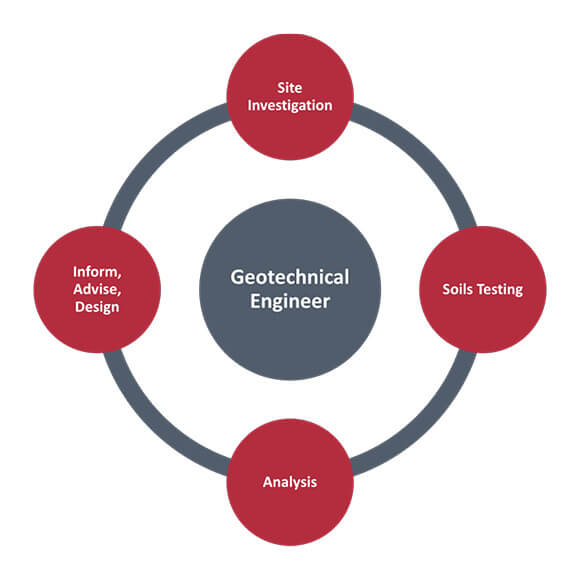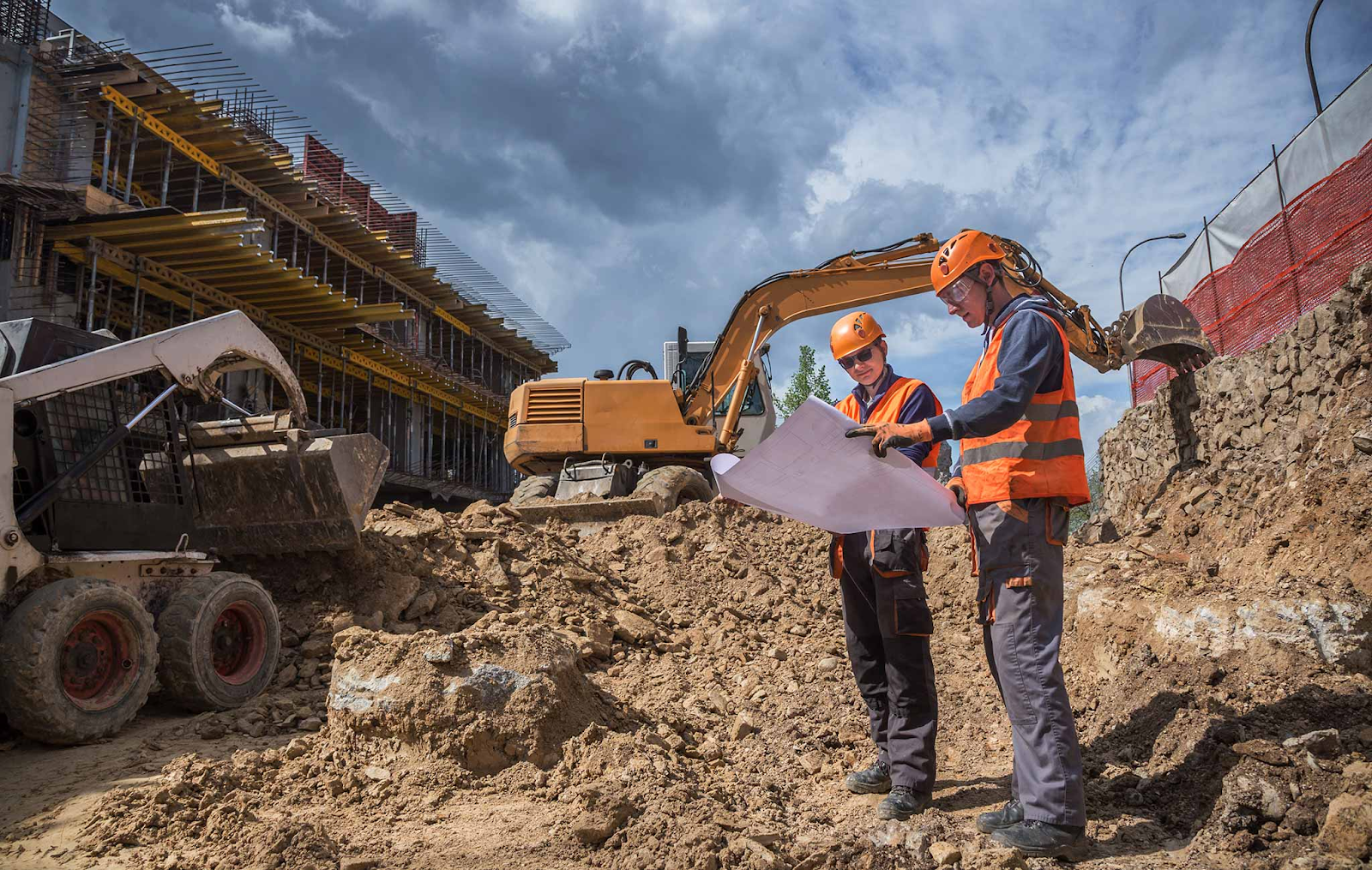The Facts About Geotechnical Engineering For Construction Projects Revealed
All About Geotechnical Engineering For Construction Projects
Table of Contents9 Simple Techniques For Geotechnical Engineering For Construction ProjectsOur Geotechnical Engineering For Construction Projects IdeasFacts About Geotechnical Engineering For Construction Projects UncoveredGet This Report on Geotechnical Engineering For Construction ProjectsThe Single Strategy To Use For Geotechnical Engineering For Construction ProjectsThe Only Guide for Geotechnical Engineering For Construction ProjectsAbout Geotechnical Engineering For Construction Projects
"A record could be 25 years old, so the concern is: Has there been a structure on that site considering that they've done the record? Even in the case of a rebuild, a geotechnical record performed 10 years in the past is most likely as well old."It's not our area to tell them what they have to do, but it is within our right to [determine the threat] based upon exactly how they're going to move on," she said. Both Cheryl and Joseph shared instances of red flags and failures connected to geotechnical concerns. Cheryl kept in mind that, throughout building of the LRT tunnel in Ottawa (not a job she was included with), a substantial sinkhole opened up on Rideau Street, likely from the instability of damp, sandy soil in the area.
The Ultimate Guide To Geotechnical Engineering For Construction Projects
He added that, when building contractors and programmers intend to utilize an uncommon or uncommon construction approach, this can be a red flag on a geotechnical report. With any geotechnical report, Joseph worried: "It's extremely essential for programmers and specialists to review and conform with the suggestions. Geotechnical engineers are entailed in all phases of the design of frameworks, from idea to building.
The Of Geotechnical Engineering For Construction Projects

In the globe of building and construction and civil design, geotechnical engineering is a keystone discipline that makes certain the safety and security, sturdiness, and sustainability of any job. Without a solid understanding of the dirt, rock, and various other earth products at a website, building reputable framework would be nearly difficult. At STS Geotechnics we strongly rely on the relevance of communicating the critical role the Geotechnical Design plays in modern construction, site growth, and environmental stewardship.
Geotechnical engineers analyse soil, rock, groundwater, and various other subsurface problems to review their viability for building. This competence permits them to forecast just how these products will certainly react to structures like structures, roadways, dams, and bridges, helping make certain secure and secure structures. Every building or facilities job depends on a structure that is secure and secure.
Poor understanding of the ground can lead to costly repair services, architectural damages, or perhaps tragic collapse. Geotechnical engineering helps stop different environmental risks that might jeopardize both individuals and the setting. Via dirt evaluation, engineers can recognize prospective issues like landslides, soil liquefaction, and erosion dangers. They can then design mitigation techniques to safeguard against these hazards, making sure that structures remain secure gradually.
Geotechnical Engineering For Construction Projects for Dummies
Designers could make jobs that lower the need for excessive excavation or lessen land disruption, contributing to the conservation of natural environments and decreasing the carbon footprint of building tasks. Proper geotechnical investigation can considerably lower construction costs by recognizing prospective issues prior to building begins. Recognizing the subsurface problems aids in picking Get More Information the best structure kind and various other architectural elements, thus staying clear of costly redesigns and repair work.
They examine natural catastrophe dangers like earthquakes, flooding, or hurricanes and assist develop structures that are planned for these events. This resilience is especially crucial as environment modification results in much more regular and serious weather events.: Guaranteeing a steady foundation is vital for any type of framework. Geotechnical designers evaluate soil and rock problems to recommend the best structure layout for security and durability.
The conventional dictates that geotechnical website investigations comply with a repetitive process (illustrated listed below) in which the outcomes of the investigation are evaluated against the purpose for which the investigation is being accomplished with additional investigations prepared as called for. Basically, ground make-up and condition can differ greatly even within a little site.
Tasks that ignore this vital solution risk their development cracking, leaning, sinking, sliding and potentially falling down as the earth below it moves. Experience dictates that a Geotechnical Engineer needs to be brought in during the initial drawing board of any building project. Just then can their abilities, know-how and referrals be utilized to stop building and construction complications before they occur.
The Only Guide for Geotechnical Engineering For Construction Projects
In the world of building, every structure depends on a structure and that structure is improved the proficiency of geotechnical design. Frequently unseen but undeniably important, geotechnical design plays an essential duty in ensuring a fantastic read the stability, safety, and longevity of structures. From high-rise buildings to bridges, roads to dams, the significance of geotechnical engineering can not be overstated.

Geotechnical Engineering For Construction Projects for Beginners
Slope stability and Earth retention: In sloping or sloped surface, maintaining slope security is essential to stop landslides, disintegration, and dirt movement. Geotechnical designers analyze the security of slopes and design earth retention systems such see this as keeping walls or incline stabilization measures to alleviate risks and ensure safety. Ground renovation methods: In some cases, the dirt conditions at a construction website might disagree for developing without previous treatment.
Prior to setting up pipes, tunnels, or below ground centers, geotechnical engineers review soil problems and groundwater levels to ensure correct placement and avoid possible risks such as dirt settlement or pipeline damage. Construction product choice: Dirt homes affect the choice of building and construction materials and techniques. Geotechnical designers assess soil characteristics to establish the suitability of products for structures, embankments, and earthworks.
The Ultimate Guide To Geotechnical Engineering For Construction Projects
By carrying out aggressive maintenance actions, engineers prolong the life-span of frameworks and safeguard against unexpected concerns. To conclude, the importance of geotechnical engineering in construction jobs can not be overemphasized. From making sure the security of structures to taking care of ecological dangers, geotechnical designers play a crucial role in every stage of the construction process.